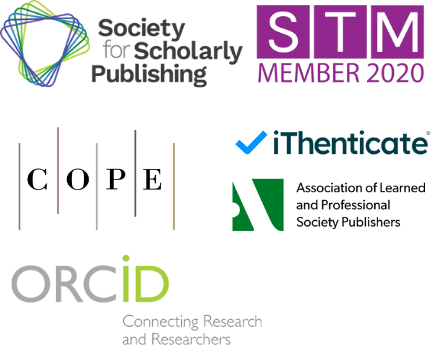Multi-Metal Catalytic Systems for Selective Product Formation
DOI:
https://doi.org/10.71222/qd0ftn57Keywords:
multi-metal catalysts, selective catalysis, bimetallic systems, synergistic effects, product selectivity, catalytic transformationsAbstract
Multi-metal catalytic systems have emerged as powerful platforms for achieving selective product formation in various chemical transformations. These systems leverage synergistic interactions between different metal centers to enhance catalytic activity, improve selectivity, and enable reactions that are challenging for single-metal catalysts. The strategic combination of metals creates unique electronic and geometric properties that facilitate targeted reaction pathways while suppressing undesired side reactions. This review examines the fundamental principles governing multi-metal catalysis, including electronic effects, geometric modifications, and cooperative mechanisms between metal sites. The application of bimetallic and trimetallic catalysts in hydrogenation reactions, carbon dioxide reduction, biomass conversion, and other industrially relevant processes is comprehensively discussed. Special attention is given to the design strategies that enable precise control over product distribution, including support selection, metal composition optimization, and surface engineering approaches. Recent advances in characterization techniques have provided deeper insights into the structure-activity relationships in multi-metal systems, facilitating rational catalyst design. The challenges associated with maintaining selectivity under various reaction conditions and strategies for catalyst stability enhancement are also addressed. This comprehensive analysis demonstrates that multi-metal catalytic systems represent a promising avenue for developing sustainable and efficient chemical processes with enhanced selectivity.
References
1. J. Su, F. Ge, Y. Zhang, M. Zhou, and X. Zhao, “Lignin-MOF hybrid polymetallic composites for selective hydrogenolysis of cellulose derived 5-hydroxymethylfurfural,” Journal of Analytical and Applied Pyrolysis, vol. 182, p. 106706, 2024, doi: 10.1016/j.jaap.2024.106706.
2. M. S. Akhtar, M. T. Naseem, S. Ali, and W. Zaman, “Metal-Based Catalysts in Biomass Transformation: From Plant Feedstocks to Renewable Fuels and Chemicals,” Catalysts, vol. 15, no. 1, p. 40, 2025, doi: 10.3390/catal15010040.
3. S. Wang, S. A. Nabavi, and P. T. Clough, “A review on bi/polymetallic catalysts for steam methane reforming,” International Journal of Hydrogen Energy, vol. 48, no. 42, pp.15879-15893, 2023, doi: 10.1016/j.ijhydene.2023.01.034.
4. F. Ding, N. Su, C. Ma, B. Li, W.-L. Duan, and J. Luan, “Fabrication of two novel two-dimensional copper-based coordination polymers regulated by the ‘V’-shaped second auxiliary ligands as high-efficiency urease inhibitors,” Inorganic Chemistry Communications, vol. 170, p. 113319, 2024, doi: 10.1016/j.inoche.2024.113319.
5. Rufino Manuel Navarro, Q. Carlos, Mota Toledo Noelia, M. Elena, and P. Barbara, “Application of Intermetallic Compounds as Catalysts for the Selective Hydrogenation of CO2 to Methanol,” ChemCatChem, vol. 16, no. 14, p.e202301496, 2024, doi: 10.1002/cctc.202301496.
6. Y. Chen, Ahsan Zohaib, H. Sun, and S. Sun, “Multi-metallic nanoparticles: synthesis and their catalytic applications,” Chemical Communications, vol. 61, no. 65, pp.12097-12114, 2025, doi: 10.1039/d5cc01468a.
7. P. Wu, F. Gong, X. Feng, Y. Xia, L. Xia, and T. Kai et al., “Multimetallic nanoparticles decorated metal-organic framework for boosting peroxidase-like catalytic activity and its application in point-of-care testing,” Journal of Nanobiotechnology, vol. 21, no. 1, 2023, doi: 10.1186/s12951-023-01946-8.
8. F. Ding, C. Ma, W.-L. Duan, and J. Luan, “Second auxiliary ligand induced two coppor-based coordination polymers and urease inhibition activity,” Journal of Solid State Chemistry, vol. 331, p. 124537, 2024, doi: 10.1016/j.jssc.2023.124537.
9. H. Lin, Y. Liu, J. Deng, L. Jing, Z. Wang, and L. Wei et al., “The Advancement of Supported Bimetallic Catalysts for the Elimination of Chlorinated Volatile Organic Compounds,” Catalysts, vol. 14, no. 8, p. 531, 2024, doi: 10.3390/catal14080531.
10. S. Singh, R. Kumar, K. K. Pant, S. Kumar, D. Joshi, and P. Biswas, “Mechanistic exploration in controlling the product selectivity via metals in TiO2 for photocatalytic carbon dioxide reduction,” Applied Catalysis B: Environment and Energy, vol. 352, p. 124054, 2024, doi: 10.1016/j.apcatb.2024.124054.
11. M. Shao, Y. Ma, Y. Xiong, L. Guo, Y. Wang, and G. Wang et al., “Multiple active site metal-based catalysts for C-N coupling reactions and the beyond,” Next Materials, vol. 8, p. 100555, 2025, doi: 10.1016/j.nxmate.2025.100555.
12. G. Xie, W. Guo, Z. Fang, Z. Duan, X. Lang, and D. Liu et al., “Dual‐Metal Sites Drive Tandem Electrocatalytic CO2 to C2+ Products,” Angewandte Chemie, vol. 136, no. 47, p. e202412568, 2024, doi: 10.1002/ange.202412568.
13. O. Muccioli, C. Ruocco, and V. Palma, “Bimetallic and Trimetallic Catalysts Advancements in the Conventional and MW-Assisted Propane Dehydrogenation Process,” Catalysts, vol. 14, no. 12, p. 950, 2024, doi: 10.3390/catal14120950.
14. A. ElSheikh, Gordana Backović, R. Oliveira, C. Sequeira, J. McGregor, and Biljana Šljukić et al., “Carbon-Supported Trimetallic Catalysts (PdAuNi/C) for Borohydride Oxidation Reaction,” Nanomaterials, vol. 11, no. 6, p. 1441, 2021, doi: 10.3390/nano11061441.
15. T. N. Nguyen, B. N. Khiarak, Z. Xu, A. Farzi, S. Md. Sadaf, and A. Seifitokaldani et al., “Multi‐metallic Layered Catalysts for Stable Electrochemical CO2 Reduction to Formate and Formic Acid,” ChemSusChem, vol. 17, no. 16, p.e202301894, 2024, doi: 10.1002/cssc.202301894.
Downloads
Published
Issue
Section
License
Copyright (c) 2025 David Chen, Yuki Nakamura (Author)

This work is licensed under a Creative Commons Attribution 4.0 International License.


